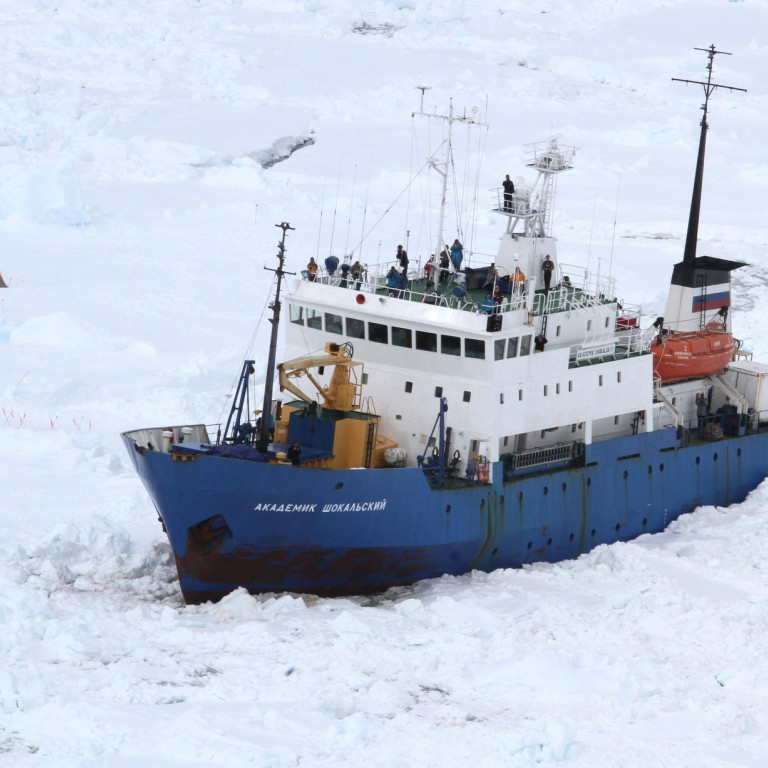
Final bid to free Akademik Shokalskiy from its trap in Antarctic ice
Passengers on a Russian research ship trapped in thick Antarctic ice faced an uncertain wait yesterday for one last icebreaking attempt - with no guarantee of success.
Passengers on a Russian research ship trapped in thick Antarctic ice faced an uncertain wait yesterday for one last icebreaking attempt - with no guarantee of success.
The MV Akademik Shokalskiy has been marooned by heavy ice since Tuesday about 100 nautical miles east of the French Antarctic base Dumont d'Urville, with two icebreaking ships so far failing in attempts to reach it.
China's Snow Dragon came tantalisingly close on Saturday, getting to within 61/2 nautical miles of the passenger vessel carrying 74 scientists, tourists and crew before impenetrable ice forced it to turn back.
The Australian government's resupply ship Aurora Australis will now make one final bid to free the icebound boat. "It will assess if it can make it through the ice to the Akademik Shokalskiy," the Australian Maritime Safety Authority (AMSA) said.
"If the Aurora Australis is not capable of getting through the ice, then we will look at utilising the helicopter on board the Chinese-flagged vessel [the Snow Dragon] which AMSA's Rescue Co-ordination Centre has tasked to remain in the vicinity."
The Snow Dragon's helicopter flew over the site yesterday afternoon to determine the best approach route for the Australian icebreaker and returned with promising news.
"RCC Australia has been advised that ice conditions are improving," an AMSA spokeswoman said.
Those on board the ship also reported an easing in the ice, with BBC journalist Andrew LuckBaker describing "big cracks appearing way towards the horizon". He added: "Pools of water are beginning to open up and we're just wondering whether this is our lucky break."
The Aurora Australis has the highest icebreaking rate of the three vessels initially sent to the Akademik's rescue, which also included France's L'Astrolabe, but there is no guarantee it will be able to reach the Russian ship. The Australian icebreaker can cut ice up to 1.6 metres thick, but the Akademik is estimated to be surrounded by ice of between three and four metres.
The captain of the Aurora Australis, Murray Doyle, said on Saturday that his vessel was not built to tackle ice thicker than three metres, likening it to driving a car into a brick wall.
Expedition co-leader Greg Mortimer said contingency plans had been made if the Australian vessel couldn't reach them "in the next few days".
These would involve taking the passengers off the Akademik using the Snow Dragon's helicopter to ferry them to other ships to return home "via the Ross Sea or [Australia's] Casey [Antarctic] base".
The call to abandon icebreaking efforts in favour of an air rescue would be made by the ships' captains, led by Doyle, he added.
Prevailing south-easterly winds have compressed the ice, making it more difficult to break, and Doyle will be hoping for a westerly which will ease pressure on the ice and boost cutting efforts.
He said the passengers would get off the ship, but "what form that takes, I don't know".
Despite the uncertainty of their plight the ship's passengers were reported to be safe, well and in good spirits and were passing their time by playing board games, watching films and taking walks on the ice to photograph passing penguins.
They have been on board for three weeks and had intended to return to New Zealand early next month.
